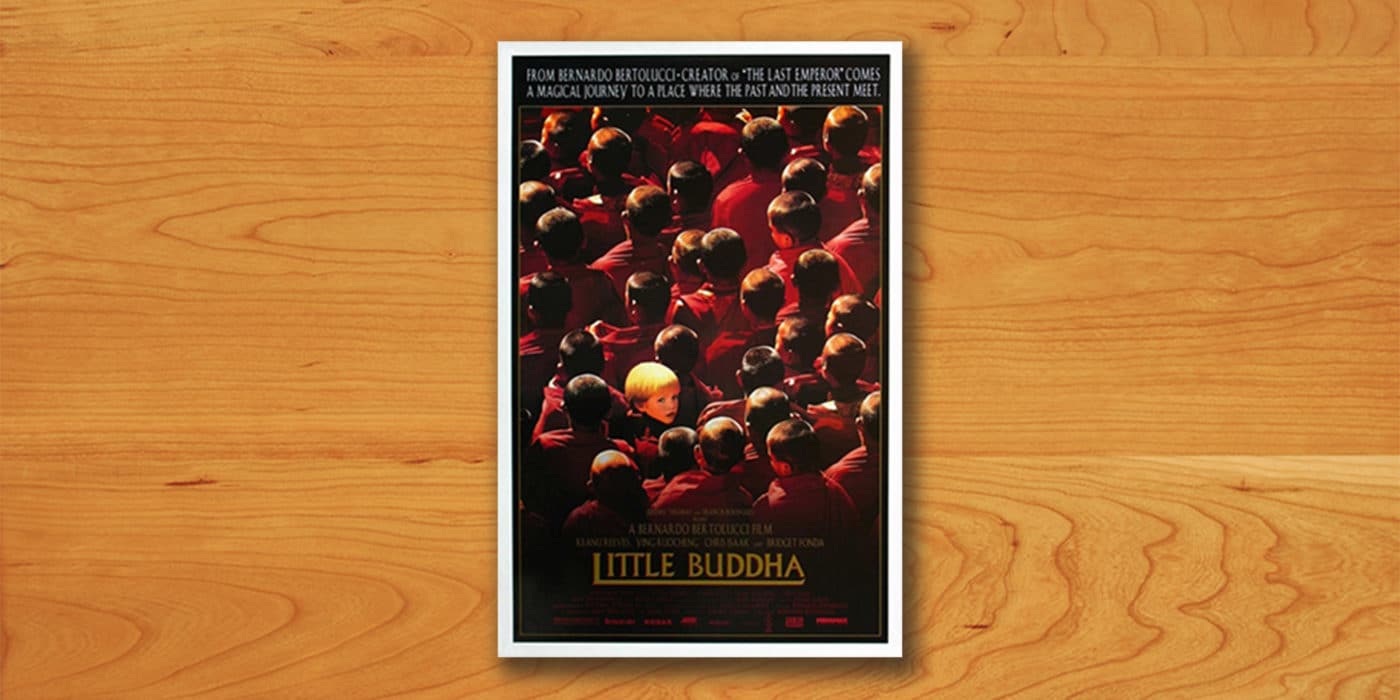At first glance, the 1993 movie “Little Buddha” seems too far-fetched to succeed. Razzie-nominated rock musician turned actor Chris Isaac as the father of a tulku (a child believed to be the reincarnation of a Tibetan lama), and Keanu Reeves (closer at that time to his “Bill and Ted’s Excellent Adventure” than his “Matrix” days) as Buddha? Whoa, dude.
But by the time the closing credits roll to an orchestral setting of the Heart Sutra, something beautiful and inspiring has taken place in this movie.
“Little Buddha” weaves together two stories. The first is the journey of Lama Norbu, an ailing Tibetan monk, to find the reincarnation of his teacher Lama Dorjee. The second story is that of Siddhartha, the prince who came to renounce his castle and riches, and dedicated his life to seeking enlightenment.
Jesse Conrad, a young boy in Seattle, is found by Tibetan monks to have the signs of being a reincarnation of Lama Dorjee. His family is not open at first to the idea of reincarnation, or to Buddhism in general, but a death in the family causes them to rethink their lives. Jesse’s father, Dean, decides to travel to Bhutan with Jesse to see if Jesse is indeed the reincarnation of Lama Dorjee.
Jesse is introduced to Buddhism through a simple storybook of the life of Buddha. Siddhartha’s journey is woven into the movie as it is read to Jesse by one of his parents or by Lama Norbu. We see Siddhartha stricken to the core by the discovery of death and suffering, and resolving firmly to seek the end of suffering. We see Nature itself celebrating the presence of one who can bring liberation. We see Siddhartha spend time in extreme asceticism before realizing the Middle Way. And at the end of the story, Jesse and the two other children he meets who are potential reincarnations of Lama Dorjee join the story as observers to the final testing and enlightenment of the Buddha.
Will Lama Norbu succeed in discovering the true reincarnation of Lama Dorjee? I’ll leave that for you to discover when you watch the movie. I will say that the movie was created in consultation with Dzongsar Jamyang Khyentse Rinpoche, a Bhutanese lama, and it handles the life and teachings of Buddha with reverence and resonance. When I watch it, I feel expanded and reminded of a greater reality to which we are all called to awaken.












